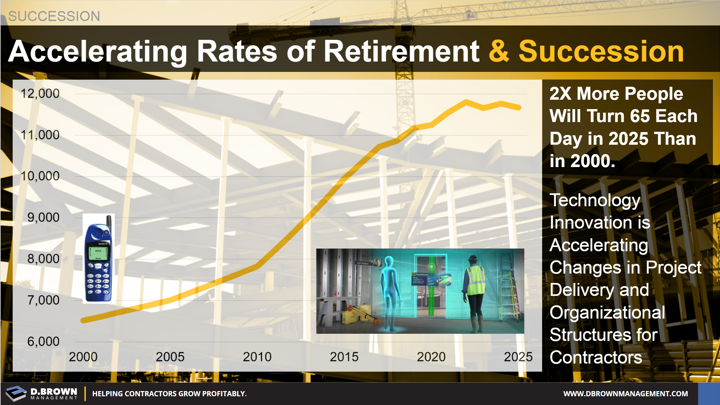There are two main reasons:
- There will be two times more people retiring per day in 2025 than there were in 2000. Assuming an average retirement age of 65, there are currently about 11,000 people retiring per day and that will increase to 12,000 per day over the next five years. About 550 of those people work in construction.
All other things being equal, this acceleration would simply mean that contractors would have to accelerate the rate which they hire and train people. This is hard but manageable.
The reality is that there is also a shortage of talent in the age range that can replace these retirees, who are in roles where 20 years of experience is needed to make almost every mistake possible to know what needs to be done, all while building the relationships necessary to get things done.
- Technology innovation is rapidly changing the project delivery methods and organizational structures of contractors. In 2000, when retirement rates were about half of where they will be in 2025, the coolest technology was a small mobile phone, but nothing truly impacting project delivery. Today, contractors are faced with integrating virtual construction, multi-trade prefabrication, and IPD contracts.
There are some people whose experiences have not set them up to effectively lead these industry changes, and succession must take place for sustainable growth.
We would love to further discuss succession planning with you.

